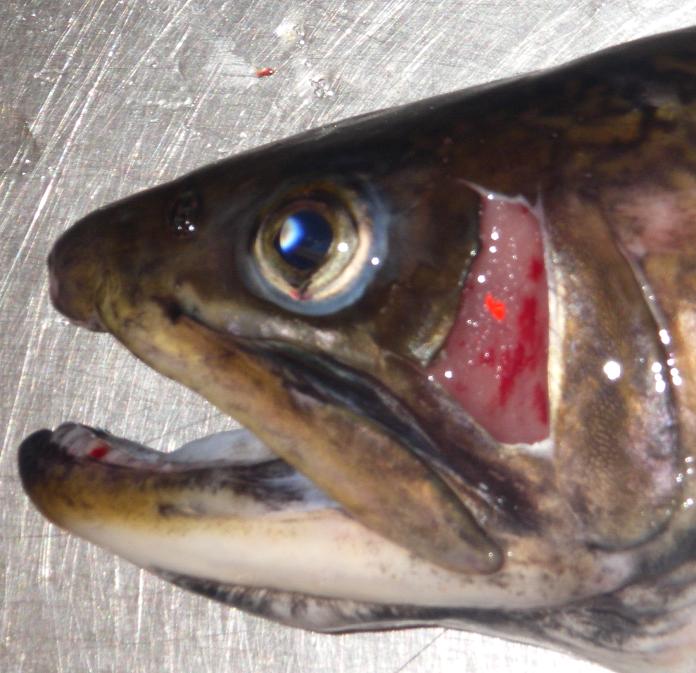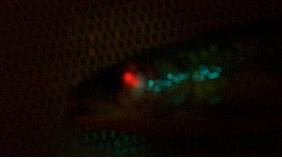Long-Term Retention and Visibility of Visible Implant Elastomer Tags in Brook Trout
Understanding how juvenile brook trout from different sources contribute to fishable populations requires a batch mark that can be applied to early life stages and be retained and visible throughout a fish's life. We evaluated visible implant elastomer (VIE) as a long-term batch mark for juvenile brook trout in hatchery and lake environments. VIE material was inserted into the postocular eye tissue of 2,350 age 0 brook trout. Marked fish were stocked into three lakes and an additional group was held in the hatchery. Tissue dissections revealed VIE tag retention was 100% after 970 days in both environments.
Tag visibility in hatchery fish examined under indoor fluorescent light was greater than 95% through 585 d then dropped to 55-70% between 700-900 d. Tag visibility in lake fish examined under outdoor sunlight was 50-72% at 400 d and declined to zero at 959 d. When these same fish were observed in dark conditions with blue-filtered light and amber glasses, tag visibility was 75% for hatchery fish at 970 d and 100% for lake fish at 959 d.The high retention and increased visibility when viewed in dark conditions with blue-filtered light demonstrates that VIE tags are a suitable long-term batch mark for juvenile brook trout. Eliminating ambient light and examining fish under dark conditions with only blue-filtered light and amber glasses provided the best conditions for detecting VIE tags. VIE tags are a suitable batch mark for long-term investigations of brook trout in hatchery and lake environments.
For further information:
Josephson, D.C., J.M. Robinson, B.C. Weidel, and C.E. Kraft. 2008. Long-term retention and visibility of visible implant elastomer tags in brook trout. North American Journal of Fisheries Management 28:1758-1761. [Link to Full Article]


